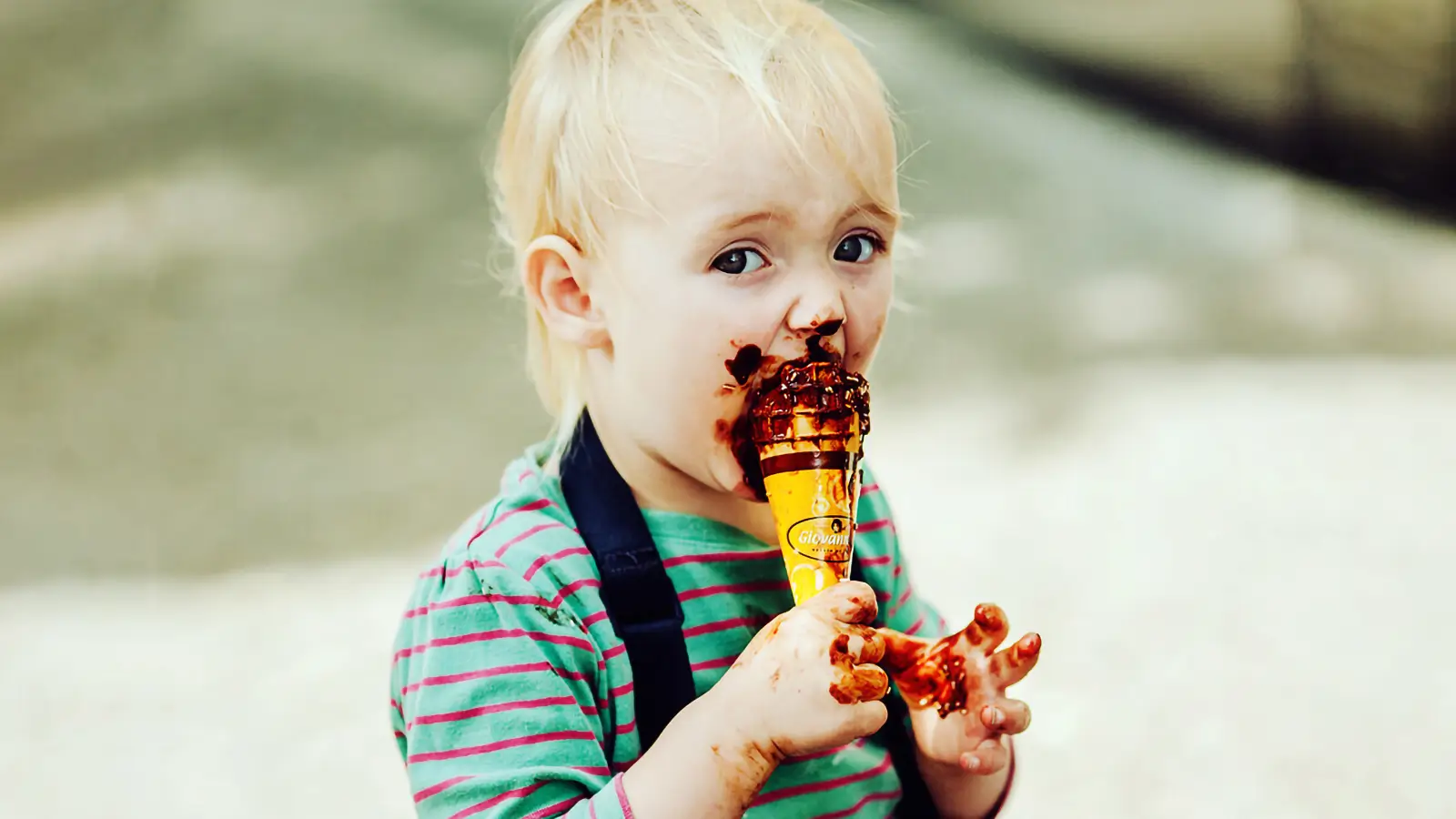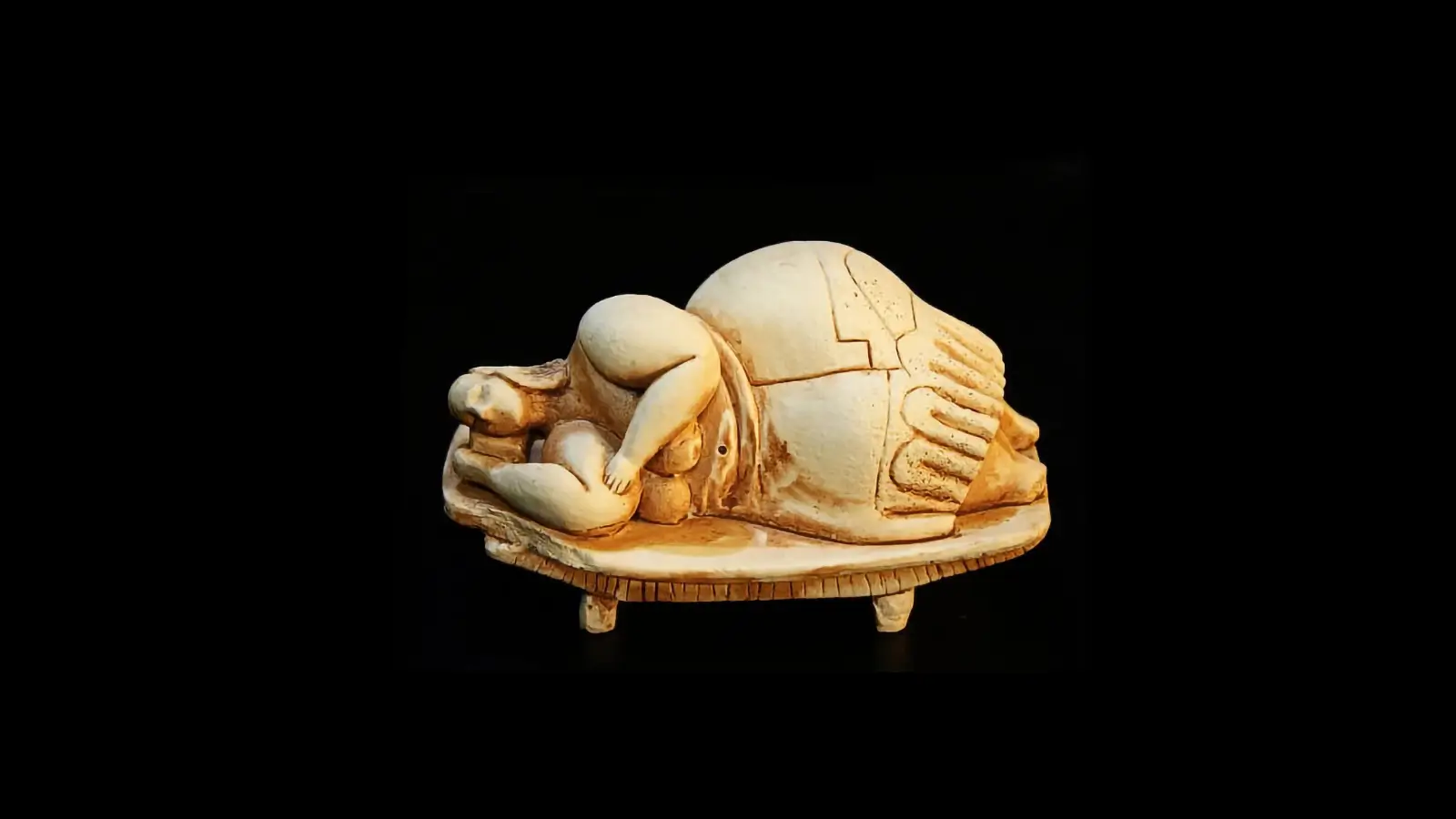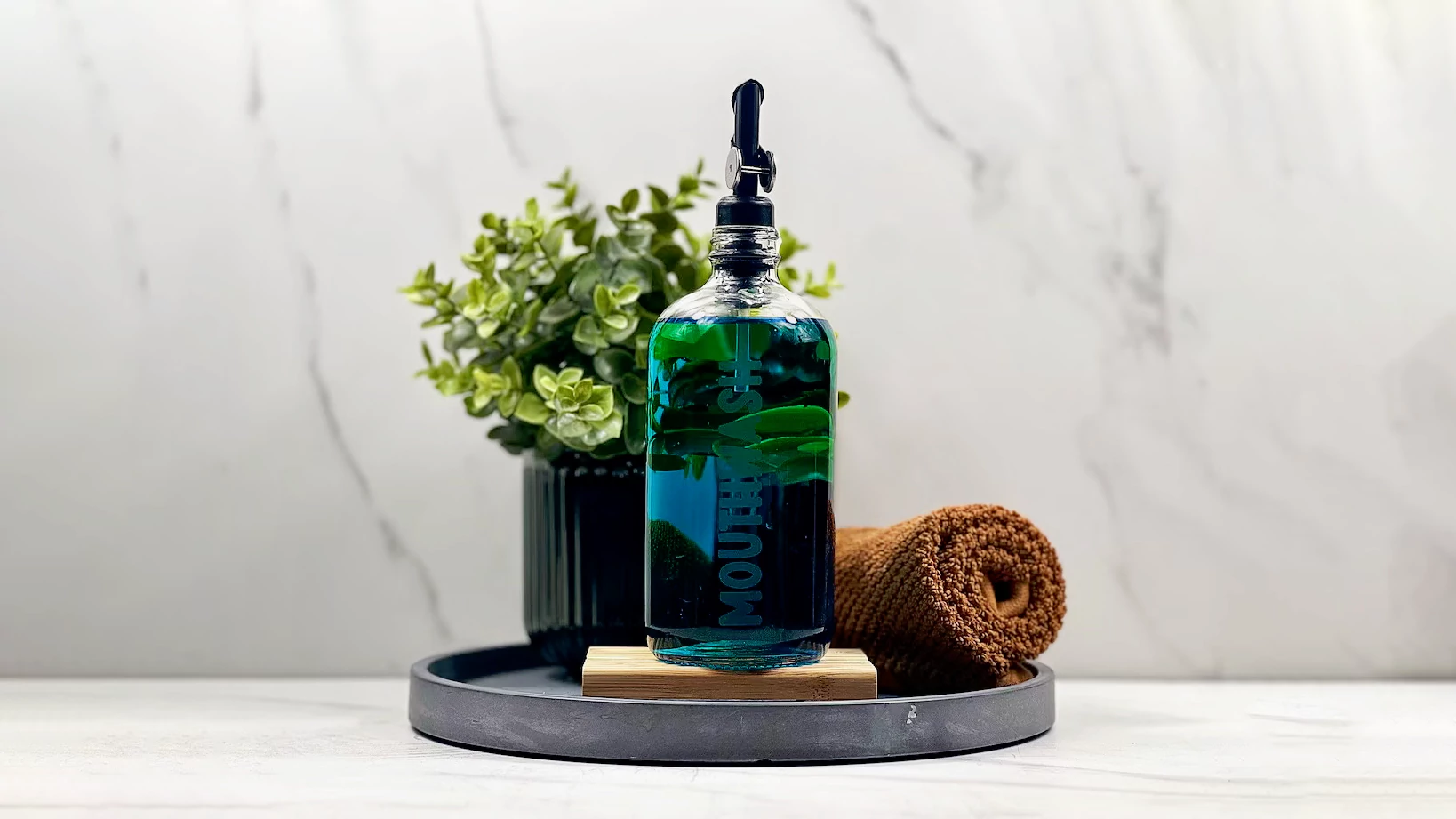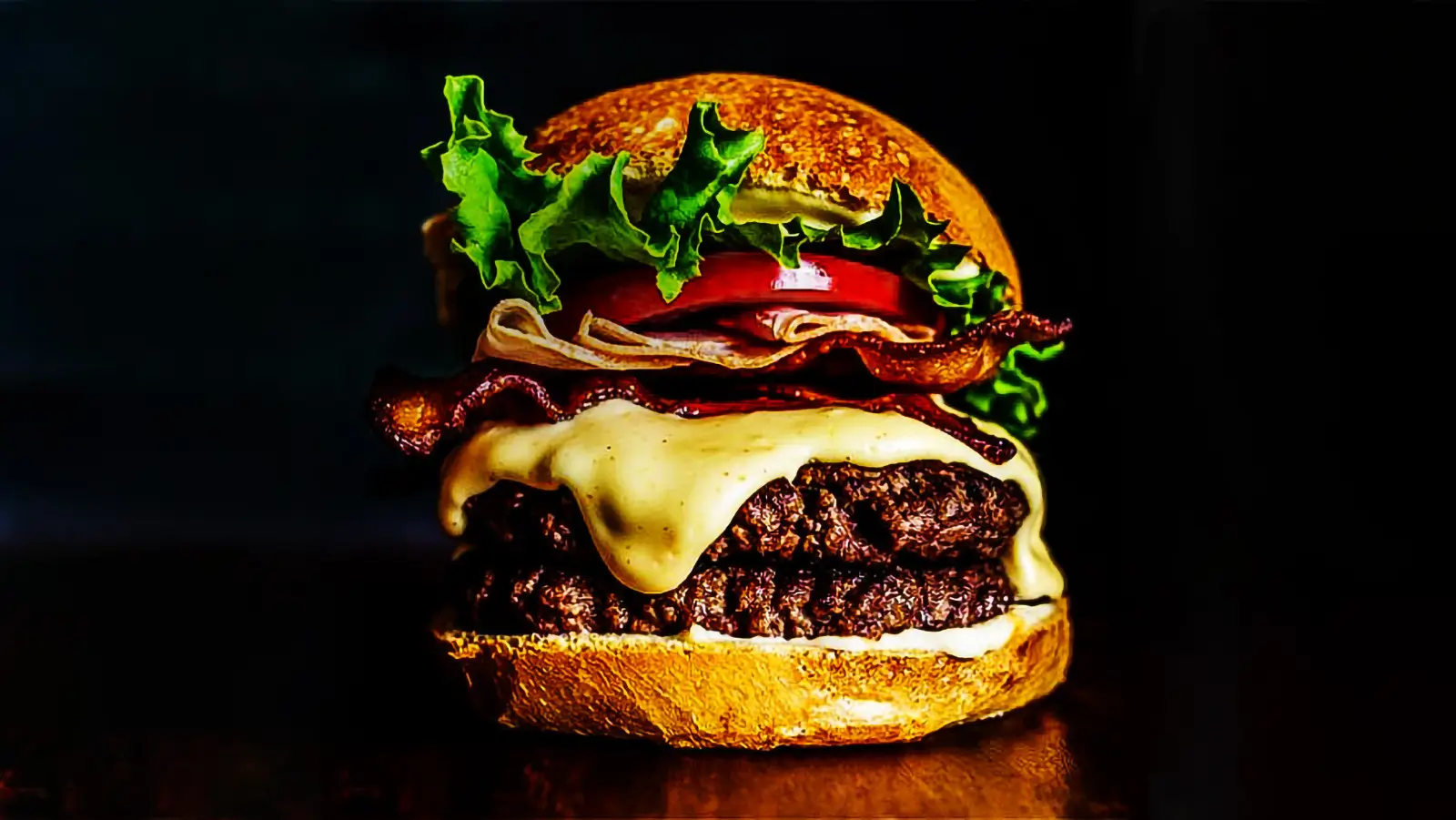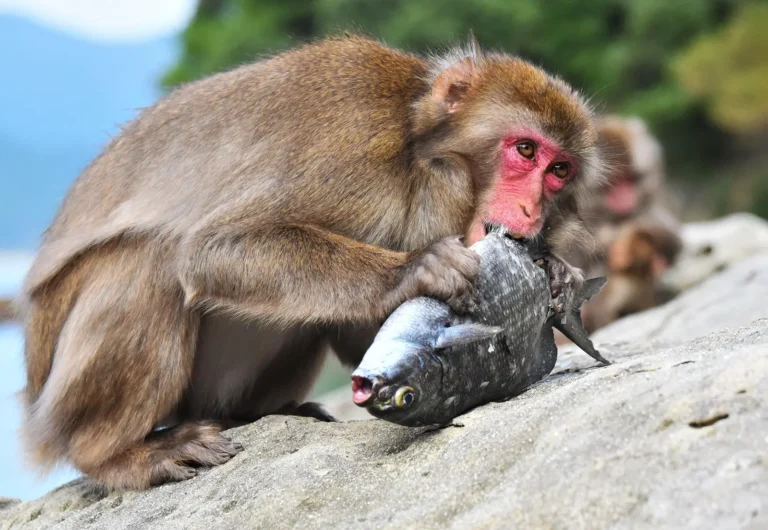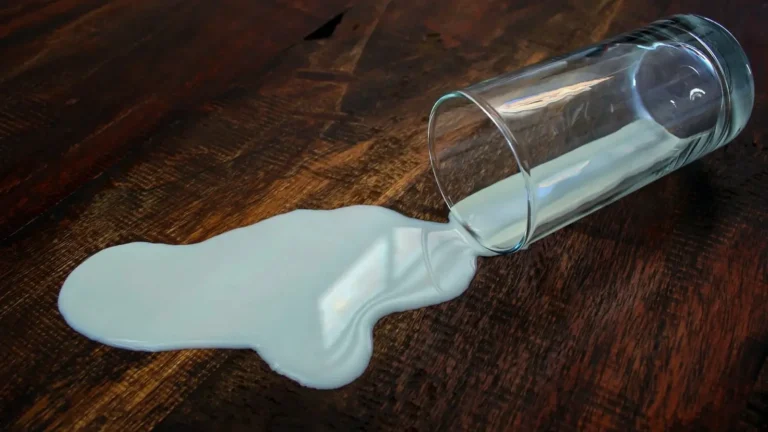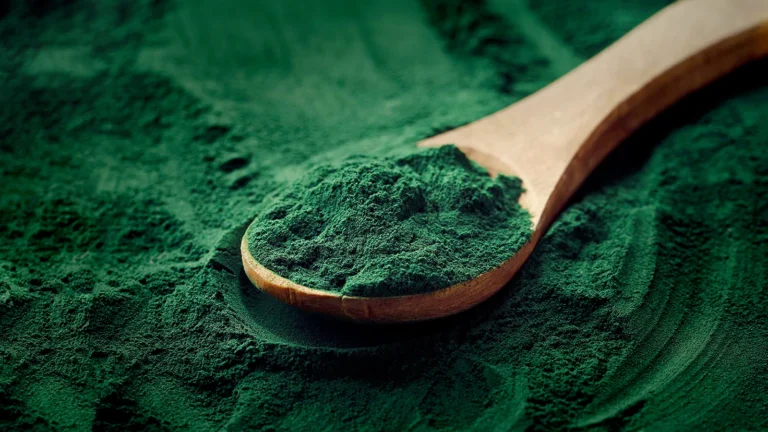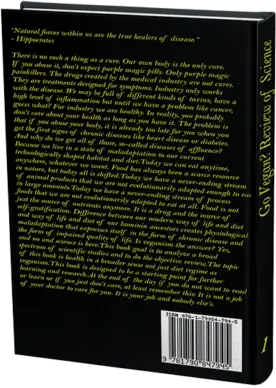Edulcorantes artificiales- Conceptos básicos
Los edulcorantes artificiales son sustancias químicas sintéticas no naturales, por lo que tenemos que estudiar la ciencia disponible para comprender los posibles efectos que estas sustancias químicas pueden tener sobre la salud.
Milos Pokimica
Escrito por: Milos Pokimica
Revisado Médicamente Por: Dr. Xiùying Wáng, M.D.
Actualizado el 28 de mayo de 2023El aumento vertiginoso de las enfermedades crónicas, especialmente la diabetes, ha empujado a la industria a comenzar a investigar alternativas saludables al azúcar, no solo en forma de productos aptos para diabéticos, sino también para la población en general. La concienciación sobre la salud y la comprensión por parte del público en general de lo que son los alimentos carentes de nutrientes o la “comida basura” han empujado a la industria no solo a buscar sustancias químicas que sean dulces, sino también a encontrar sustancias químicas que no tengan calorías. Para la industria, sería mucho más fácil encontrar alternativas al azúcar en forma de sustitutos más saludables con calorías, pero eso no es lo que genera beneficios. De hecho, hemos observado una tendencia totalmente opuesta a la de añadir cada vez más fructosa procedente de la producción de maíz, que es barata, a los refrescos y otros productos. La situación actual es que todas las personas que desean optimizar su dieta incluso si tiene diabetes, tendrá que hacerlo por su cuenta después de tamizar a través de toda la información contradictoria y la ciencia y la propaganda. El problema es que todos sabemos que un porcentaje muy pequeño de nosotros lo hará realmente.
La situación actual es que el azúcar está por todas partes, especialmente la fructosa, y si quieres algo que siga siendo dulce y no tenga calorías puedes utilizar edulcorantes artificiales.
Los edulcorantes artificiales son sustancias químicas que no proceden de la naturaleza, por lo que debemos estudiar los datos científicos disponibles para comprender los posibles efectos que pueden tener sobre la salud o de otro tipo.
El primer problema es que no son de azúcar, así que aunque sean dulces eso es sólo el sabor. El azúcar es algo más que el sabor. Es un neuroquímico liberador de dopamina que afecta a todos los aspectos de nuestro comportamiento. Por ejemplo, si tienes hipoglucemia y empiezas a temblar y te sientes mal, los edulcorantes artificiales no te ayudarán en absoluto.
Debido a esto los edulcorantes artificiales no tienen el efecto deseado al mismo nivel en el cerebro si no son excitotoxinas al mismo tiempo. Para reemplazar realmente los efectos neuro del azúcar tendremos que utilizar excitotoxinas que sean dulces.
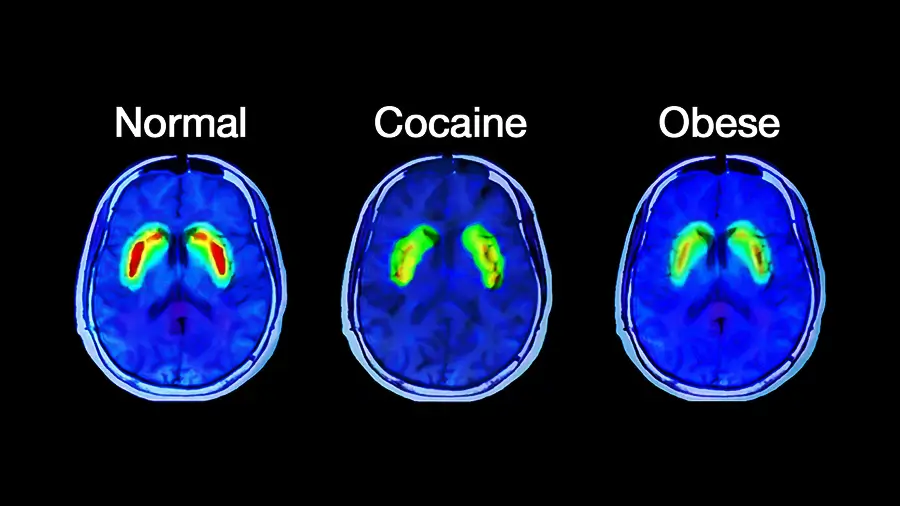
La estevia puede hacer que las cosas sean dulces, pero no tendrá un efecto dopaminérgico en el cerebro como el azúcar y, especialmente, la combinación de azúcar y grasa, por lo que normalmente no sería satisfactorio como chocolate o helado. Seguirá teniendo un efecto simulativo, pero sólo durante un breve periodo de tiempo.
La industria necesita combinar azúcar y grasa o utilizar sustancias químicas excitotoxinas para proporcionar una sensación de saciedad dopaminérgica. La combinación de azúcar y grasa, y especialmente la combinación de azúcar refinado y grasa refinada, no existen en la naturaleza, por lo que nuestro cerebro no está acostumbrado a ellas. Es algo que se conoce como gong estímulos. Los edulcorantes artificiales tienen que ser sustancias químicas liberadoras de dopamina para simular completamente el azúcar refinado.

Esa es la razón, por ejemplo, por la que Coca-Cola sólo utiliza aspartamo (que es excitotoxina) en la Coca-Cola Zero.
Los azúcares artificiales son buenos para la industria de otras maneras. Pueden comercializar los productos como bajos o sin calorías, saludables, dietéticos, etc., pero eso es lo contrario de lo que ocurre. Lo primero que ocurre cuando nuestro cerebro registra la sensación de dulzor en la boca es lo mismo que ocurrió en millones de años de evolución, y es decirte que te lo comas y que te guste. El cerebro no sabe que eso que tenemos en la boca es un refresco light. Piensa que es alguna fruta dulce y que te abrirá el apetito y te dará ganas para que te lo comas rápido y mientras puedas antes de que llegue algún tigre. Ahora hay otro mecanismo que te dirá que dejes de comerlo antes de que comas en exceso porque si comes en exceso, puede que no seas capaz de huir del tigre. Cada vez que comemos hay un mecanismo de saciedad que nos dirá cuándo hemos comido suficiente.
Con los edulcorantes artificiales no calóricos, estamos desconectados.
Nos estimula el dulzor que llega al cerebro, pero no nos quita el apetito porque nos aporta calorías. Nos dejará con ganas de más. Y como el estímulo es menor que el de una comida completa de grasa y azúcar, la la sensación es sólo temporal. Puede que te sientas bien bebiendo un refresco light, por ejemplo, pero en cuanto dejes de hacerlo y cesen las señales de sensación dulce, tu cerebro volverá a detectar el hambre.
Los estudios realizados suelen constatar que el sabor dulce, ya sea producido por el azúcar o por edulcorantes artificiales, aumenta el apetito humano.
Este aumento del apetito nos habrá llevado a comer en exceso aún más de lo que lo habríamos hecho sin los refrescos light y acabaremos ganando peso. Es un hecho bien conocido en el sector, derivado de varios estudios prospectivos de cohortes a gran escala, que existe una correlación positiva entre el consumo de edulcorantes artificiales y el aumento de peso. Aunque las personas suelen elegir productos “light” o “dietéticos” para perder peso, los estudios de investigación sugieren que los edulcorantes artificiales pueden contribuir en realidad al aumento de peso.
La explicación más común que le gusta usar a la industria para este hallazgo contrario a la intuición es lo que se denomina causalidad inversa.
La gente no está gorda porque beba refrescos light. Beben refrescos light porque están gordos. Así que los refrescos light no tienen nada que ver. Es su dieta en general la que es mala. Y estoy de acuerdo con eso, pero como siempre hay algo más.
El Estudio del Corazón de San Antonio, por ejemplo, examinó a 3.682 adultos durante un periodo de siete a ocho años en la década de 1980. Cuando se emparejaron por índice de masa corporal (IMC) inicial, sexo, etnia y dieta, los bebedores de bebidas edulcoradas artificialmente tenían sistemáticamente IMC más altos en el seguimiento, con dependencia de la cantidad de consumo. La adición de bebidas edulcoradas artificialmente sólo les animaba a comer más. También se han observado resultados similares en estudios con niños.
En la ciencia de la nutrición, existe un efecto psicológico conocido como “sobrecompensación por la reducción calórica esperada”.”
Si sustituyes discretamente el refresco de alguien por uno light o unos dulces por otros sin azúcar sin que la persona se entere, su ingesta calórica disminuirá. Sin embargo, las personas que consumen edulcorantes artificiales a sabiendas pueden acabar ingiriendo más calorías debido a la sobrecompensación que se produce posteriormente. Uno de los estudios consistió en dar a las personas cereales endulzados artificialmente para desayunar, pero solo a la mitad se les informó de ello (Mattes, 1999). Si hay una hora para almorzar, el grupo que entendió que tenían cereales con edulcorantes artificiales consumió significativamente más calorías en total que aquellos que no lo sabían.
Los únicos que pueden perder peso con productos alimenticios “light“ y “dietéticos“ son aquellos que no se dan cuenta de que los están bebiendo o comiendo.
Mientras tanto, como saben que solo comerán más productos “light” y gastarán cada vez más dinero en ellos sin perder peso, y esto es solo el aspecto psicológico.
También hay un componente fisiológico. Los animales buscan comida para satisfacer el ansia inherente de dulce, incluso en ausencia de necesidades energéticas. La falta de satisfacción completa alimenta aún más el comportamiento de búsqueda de comida. La reducción de la respuesta de recompensa puede contribuir a la obesidad, sobre todo porque los edulcorantes artificiales no activan las vías de recompensa de la comida de la misma manera que los edulcorantes naturales y, especialmente, no una combinación de azúcar y grasa a la que la mayoría de la gente está acostumbrada. Hay una cosa más. Dejar el azúcar por completo y comer alimentos naturales con edulcorantes artificiales añadidos vuelve a ser problemático porque los edulcorantes artificiales, precisamente porque son dulces, fomentan los antojos de azúcar y la dependencia del azúcar. Condicionan el cerebro al nivel de dulzor deseado y comer alimentos normales parece poco satisfactorio o incluso amargo o agrio. La intensidad del dulzor de los alimentos normales no edulcorados se percibe como menor porque la exposición repetida entrena la preferencia por el sabor.
Existe una fuerte correlación entre la ingesta habitual de un sabor por parte de una persona y la intensidad preferida de ese sabor.
Llevar una dieta saludable basada en alimentos integrales con edulcorantes artificiales añadidos entrenará al cerebro para que espere el mismo nivel de intensidad en otros alimentos habituales y hará que no quieras comerlos. Este comportamiento se observa tanto en niños como en adultos, solo que los niños lo expresan más abiertamente. Si seguimos consumiendo edulcorantes, con o sin calorías, no podremos entrenar nuestras preferencias gustativas para alejarnos de los alimentos intensamente dulces. El uso de edulcorantes artificiales hará que toda tu comida saludable te parezca sin azúcar. Es difícil acostumbrarse al nivel de dulzor natural de los alimentos, incluso cuando tenemos híbridos de plátanos y frutos secos excesivamente dulces, si se consume azúcar o edulcorantes artificiales de forma habitual.
Si las bebidas edulcoradas artificialmente realmente ayudaran en lo que se dice que hacen, tendríamos estudios que respaldaran ese resultado. No es así, sino exactamente lo contrario, y la industria lo sabe.
No es más que otra mentira para aumentar las ventas que hace que la gente se sienta mejor consigo misma.
Y hay una ventaja más. La toxicidad potencial de los edulcorantes artificiales.
Algunas investigaciones han asociado los edulcorantes artificiales con una amplia gama de afecciones de la salud, tales como cánceres y daño al ADN, hepatotoxicidad, migrañas y bajo peso al nacer. En los Estados Unidos, los tres compuestos primarios más comunes utilizados como sustitutos del azúcar son la sacarina (por ejemplo, Sweet'N Low), el aspartamo (por ejemplo, Equal y NutraSweet) y la sucralosa (por ejemplo, Splenda). En muchos otros países se utilizan ampliamente el ciclamato y el edulcorante herbal stevia.
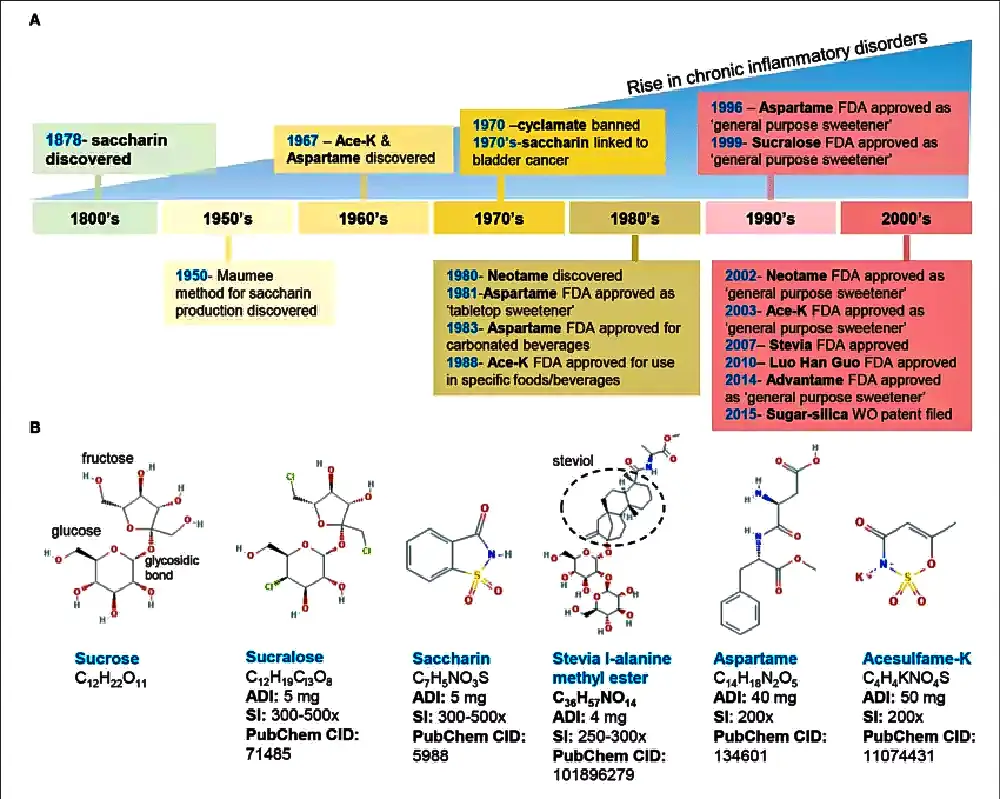
El acesulfamo K que se vende como edulcorante está relacionado con un dolor de cabeza agudo y también con daños en el ADN. Está demostrado que es clastogénico (agente mutagénico) y genotóxico a dosis elevadas y ha causado tumores de tiroides en ratas.
El ciclamato, vendido como azúcar gemela, se prohibió hace más de 40 años por la relación entre el cáncer de vejiga en ratones y la atrofia testicular en ratones. Sigue siendo legal en Canadá y muchos otros países.
La sacarina, descubierta por accidente mientras se experimentaba con un derivado del alquitrán de hulla, está relacionada con náuseas, vómitos, diarrea, cáncer en crías de animales amamantados, bajo peso al nacer, cáncer de vejiga en personas y hepatotoxicidad.
La sucralosa, descubierta por casualidad mientras se realizaban experimentos en el Queen's College de Londres con el fin de formular un nuevo pesticida (por ejemplo, Splenda), está relacionada con diarrea, encogimiento del timo y agrandamiento del ciego en ratas. Es un desencadenante muy fuerte de migrañas.
Los alcoholes de azúcar como el sorbitol y el xilitol, a diferencia del eritritol, no se absorben, por lo que fermentan en el colon y atraen líquido hacia él, pudiendo tener un efecto laxante.
Está bien, pero todavía hay gente que quiere probar algo dulce pero tiene diabetes, y para ellos normalmente los sustitutos del azúcar son imprescindibles en la dieta.
Hasta que se realizaron algunos estudios nuevos, la creencia común últimamente era que los edulcorantes sustitutivos no nutritivos eran sustitutos saludables del azúcar porque proporcionan un sabor dulce sin calorías ni efectos glucémicos, por lo que pueden ser muy beneficiosos para las personas diabéticas. Sin embargo, los resultados de algunas investigaciones epidemiológicas han descubierto que el consumo de alimentos edulcorados artificialmente, principalmente en refrescos light, se asocia a un mayor riesgo de desarrollar obesidad, síndrome metabólico y, lo que es más importante, diabetes de tipo 2.
El problema era que se consideraban simplemente sustancias químicas “metabólicamente inactivas” en el intestino y que simplemente salían del sistema digestivo sin provocar una desregulación metabólica.
Ya he mencionado que los alimentos endulzados artificialmente interfieren con las respuestas aprendidas que contribuyen a los antojos de azúcar y al control del apetito, pero también hay otra cosa importante para todos, pero especialmente para las personas con diabetes que son las que más los utilizan.
Los edulcorantes artificiales tienen efectos metabólicos.
En este estudio, por ejemplo (Pepino y otros, 2013) cuando dan a individuos obesos la cantidad de sucralosa que se encuentra en una lata de coca-cola zero obtendrán picos de azúcar en sangre significativamente más altos en respuesta a una prueba de glucosa. ¿Cuánto? Un 20% más de niveles de insulina en sangre, lo que demuestra que la sucralosa provoca resistencia a la insulina. Y no sólo la sucralosa. En este estudio (Suez et al., 2014) analizaron la sacarina (Sweet'N Low), el aspartamo (Equal y NutraSweet) y la sucralosa (Splenda) y descubrieron que todos ellos inducen intolerancia a la glucosa al alterar el microbioma.
Alteran los microbios que viven en nuestro intestino.
Si consumes edulcorantes artificiales, estos alterarán las bacterias que crecen en tu intestino, ya que son difíciles de absorber, por lo que permanecen en el intestino grueso y fermentan. El acesulfamo-K también se sometió a pruebas y se correlacionó con cambios en las bacterias intestinales. Esto también es importante no solo para las personas con diabetes, sino también para otras enfermedades relacionadas con el sistema digestivo, como las enfermedades inflamatorias intestinales, como la colitis ulcerosa y la enfermedad de Crohn. Por ejemplo, el ciclamato no se metabolizó cuando se inyectó por primera vez, y las bacterias intestinales no saben qué hacer con él. Sin embargo, después de diez días, el 75% se metaboliza por las bacterias intestinales en ciclohexilamina, y si se deja de consumir, las bacterias que lo metabolizan mueren. La ciclohexilamina es muy tóxica, y la FDA la prohibió en 1969, pero no en Canadá ni en muchos otros países.
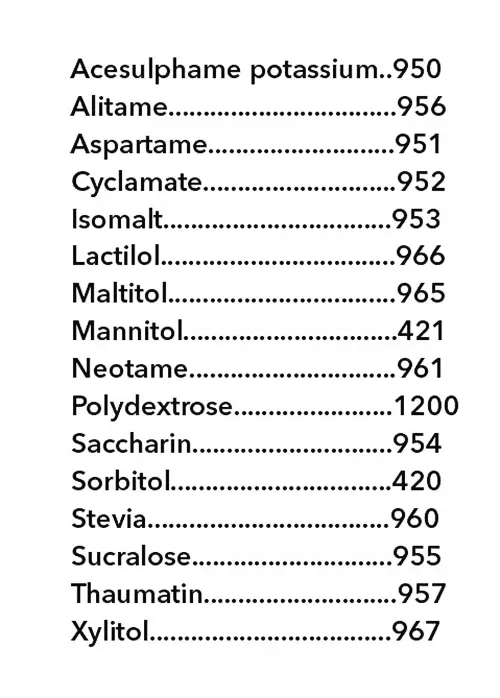
Entonces, ¿hay algún edulcorante artificial que sea seguro?
Se cree que la estevia no es tan mala porque inicialmente hubo algunas investigaciones que demostraron que es totalmente inofensiva. Más tarde se descubrió que puede afectar al microbioma de los intestinos de las ratas. Se fermenta en una sustancia llamada esteviol que es mutagénica y causa daños en el ADN. Los humanos tenemos las mismas bacterias intestinales que fermentan la estevia. Cuando comemos estevia, el esteviol mutagénico se crea y se absorbe en nuestro torrente sanguíneo.
La OMS considera que 4 mg de stevia por kg de peso corporal son seguros, por lo que podría consumir un alimento endulzado con stevia al día.
Hasta ahora, el único edulcorante artificial no tóxico puede ser el eritritol.
Se encuentra de forma natural en uvas, peras y melones, pero en la industria se utiliza levadura para elaborarlo. Dado que existe en la naturaleza, debemos suponer que llevamos millones de años consumiéndola, por lo que es posible que tengamos cierta tolerancia a ella. Se absorbe en el intestino sin fermentación y no tiene efecto laxante. Parece que no interactúa con nada ni tiene ningún metabolismo en el torrente sanguíneo y se excreta sin cambios en la orina. No se correlaciona con ninguna enfermedad, e incluso podría ser útil. En realidad podría ser un antioxidante que al mismo tiempo también es dulce (den Hartog et al., 2010). El eritritol ha demostrado ser un excelente eliminador de radicales libres (antioxidante) in vivo y puede ayudar a proteger contra el daño vascular inducido por la hiperglucemia (diabetes).
Para estar seguro si tienes diabetes y utilizas edulcorantes artificiales utiliza Eritritol.
Hasta ahora la ciencia demuestra que ésta es la mejor opción. En el estudio citado se demostró que el eritritol protege la destrucción oxidativa de los glóbulos rojos. Químicamente, la estructura del eritritol es muy similar a la del manitol, un conocido antioxidante. El problema con el manitol y otros edulcorantes derivados del alcohol como el sorbitol o el xilitol es que no se absorben, a diferencia del eritritol.
Los únicos edulcorantes que son dulces y tienen propiedades antioxidantes al mismo tiempo son las frutas.
La mejor práctica a adoptar es que, si tienes antojo de azúcar, te comas la fruta entera.
Son edulcorantes, pero al mismo tiempo tienen propiedades nutritivas y también son saludables. Hoy en día vivimos en una sociedad globalizada en la que la mayoría podemos encontrar fruta fresca o congelada durante todo el año. Y también podemos utilizar fruta deshidratada. Es una cuestión de gustos. En algunos casos en los que no se puede hacer, por ejemplo si quieres endulzar tu café, utiliza eritritol.
El azúcar de dátiles es el edulcorante más sano hoy en día y no es realmente azúcar, sino dátiles secos enteros pulverizados en polvo.
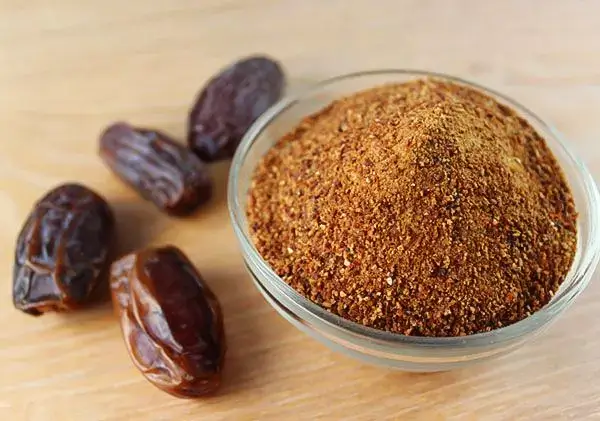
Los dátiles son en peso 80% azúcar, pero no están correlacionados con efectos negativos sobre el aumento de peso, y el control de azúcar en la sangre y en realidad mejoran los niveles de estrés antioxidante y Hallawi es mejor que Medjool (Rock et al., 2009).
Como los dátiles u otros frutos secos o frutas naturales contienen fibra, tienen un efecto espesante. Si no puede utilizar azúcar de dátiles u otro tipo de frutos secos para alguna receta y necesita azúcar refinado, entonces utilice jarabe de malta de cebada o melaza. Las melazas ocupan el segundo lugar.

Para entender por qué recomiendo el azúcar refinado bajo en fructosa, como el jarabe de malta de cebada, en lugar del azúcar blanco o la miel, puede leer un artículo relacionado (El azúcar refinado de riesgo para la salud de las correlaciones - Comprender los conceptos básicos). Si no desea espesar el café o el té, por ejemplo, el eritritol puede ser una opción.
Referencias:
- Mattes R. (1990). Efectos del aspartamo y la sacarosa sobre el hambre y la ingesta de energía en humanos. Fisiología y comportamiento, 47(6), 1037-1044. https://doi.org/10.1016/0031-9384(90)90350-d
- Pepino, M. Y., Tiemann, C. D., Patterson, B. W., Wice, B. M., & Klein, S. (2013). La sucralosa afecta a las respuestas glucémicas y hormonales a una carga oral de glucosa. Atención a la diabetes, 36(9), 2530-2535. https://doi.org/10.2337/dc12-2221
- Suez, J., Korem, T., Zeevi, D., Zilberman-Schapira, G., Thaiss, C. A., Maza, O., Israeli, D., Zmora, N., Gilad, S., Weinberger, A., Kuperman, Y., Harmelin, A., Kolodkin-Gal, I., Shapiro, H., Halpern, Z., Segal, E., & Elinav, E. (2014). Los edulcorantes artificiales inducen intolerancia a la glucosa mediante la alteración de la microbiota intestinal. Naturaleza, 514(7521), 181-186. https://doi.org/10.1038/nature13793
- den Hartog, G. J., Boots, A. W., Adam-Perrot, A., Brouns, F., Verkooijen, I. W., Weseler, A. R., Haenen, G. R., & Bast, A. (2010). El eritritol es un dulce antioxidante. Nutrición (Burbank, Los Angeles County, California.), 26(4), 449-458. https://doi.org/10.1016/j.nut.2009.05.004
- Rock, W., Rosenblat, M., Borochov-Neori, H., Volkova, N., Judeinstein, S., Elias, M., & Aviram, M. (2009). Effects of date ( Phoenix dactylifera L., Medjool or Hallawi Variety) consumption by healthy subjects on serum glucose and lipid levels and on serum oxidative status: a pilot study. Diario de la química agrícola y alimentaria, 57(17), 8010-8017. https://doi.org/10.1021/jf901559a
Contenidos Relacionados
¿Tienes alguna duda acerca de la nutrición y la salud?
Me encantaría saber de usted y responderlas en mi próxima publicación. Agradezco sus aportes y opiniones y espero tener noticias suyas pronto. También te invito a síguenos en Facebook, Instagram y Pinterest para más contenidos sobre dieta, nutrición y salud. Puedes dejar un comentario allí y conectar con otros entusiastas de la salud, compartir tus consejos y experiencias, y recibir apoyo y ánimo de nuestro equipo y nuestra comunidad.
Espero que este post le haya resultado informativo y ameno y que esté preparado para aplicar los conocimientos adquiridos. Si le ha resultado útil, por favor compártelo con tus amigos y familiares que también podrían beneficiarse de ella. Nunca se sabe quién puede necesitar orientación y apoyo en su camino hacia la salud.
– También Te Puede Interesar –

Aprenda Sobre Nutricion
Milos Pokimica es doctor en medicina natural, nutricionista clínico, escritor sobre salud médica y nutrición y asesor en ciencias de la nutrición. Autor de la serie de libros Go Vegan? Revisión de la Ciencia, también dirige el sitio web sobre salud natural GoVeganWay.com.
Descargo De Responsabilidad Médica
GoVeganWay.com le ofrece reseñas de las últimas investigaciones relacionadas con la nutrición y la salud. La información proporcionada representa la opinión personal del autor y no pretende ni implica sustituir el asesoramiento, diagnóstico o tratamiento médico profesional. La información proporcionada tiene fines informativos únicamente y no pretende sustituir la consulta, el diagnóstico y/o el tratamiento médico de un médico o proveedor de atención médica calificado.NUNCA ignore el CONSEJO MÉDICO PROFESIONAL O RETRASAR la BÚSQUEDA de TRATAMIENTO MÉDICO a CAUSA DE ALGO QUE HAYA LEÍDO EN O accesibles a TRAVÉS de GoVeganWay.com
NUNCA APLICAR CUALQUIER cambio de ESTILO de vida O CAMBIOS EN su totalidad COMO UNA CONSECUENCIA DE ALGO QUE HA LEÍDO EN GoVeganWay.com ANTES de CONSULTAR con LICENCIA PROFESIONAL MÉDICO.
En el caso de una emergencia médica, llame a un médico o al 911 inmediatamente. GoVeganWay.com no se recomienda ni aprueba ninguna de los grupos, las organizaciones, las pruebas, los médicos, productos, procedimientos, opiniones u otra información que pueda ser mencionado en el interior.
Selecciones del editor –
Milos Pokimica es escritor especializado en salud y nutrición y asesor en ciencias nutricionales. Autor de la serie de libros Go Vegan? Revisión de la Ciencia, también dirige el sitio web sobre salud natural GoVeganWay.com.
Últimos artículos -
Top Noticias De Salud — ScienceDaily
- MIT scientists strip cancer of its sugar shielden diciembre 23, 2025
Scientists at MIT and Stanford have unveiled a promising new way to help the immune system recognize and attack cancer cells more effectively. Their strategy targets a hidden “off switch” that tumors use to stay invisible to immune defenses—special sugar molecules on the cancer cell surface that suppress immune activity. Early tests show it can supercharge immune responses and outperform current antibody therapies.
- Scientists find a weak spot in deadly fungus that shut down hospital intensive care unitsen diciembre 23, 2025
A deadly hospital fungus that resists nearly every antifungal drug may have an unexpected weakness. Researchers discovered that Candida auris activates specific genes during infection to hunt for nutrients it needs to survive. This insight came from a new living-host model that allowed scientists to watch the fungus in action. The findings could eventually lead to new treatments or allow current drugs to be repurposed.
- This ultra-sensitive imaging system can spot cancer earlieren diciembre 23, 2025
A new imaging technology can distinguish cancerous tissue from healthy cells by detecting ultra-weak light signals. It relies on nanoparticles that bind to tumor markers, making cancerous areas easier to identify. The system is far more sensitive than existing tools and could speed up cancer screening. Scientists believe it may help detect tumors earlier and reduce delays in diagnosis.
- Hidden brain maps that make empathy feel physicalen diciembre 23, 2025
When we watch someone move, get injured, or express emotion, our brain doesn’t just see it—it partially feels it. Researchers found eight body-like maps in the visual cortex that organize what we see in the same way the brain organizes touch. These maps help us instantly understand actions, emotions, and intentions in others. The discovery sheds light on human empathy and opens doors for new brain-based therapies and AI systems that better understand the body.
- Are they really listening? Watch their blinksen diciembre 23, 2025
Your eyes may reveal when your brain is working overtime. Researchers found that people blink less when trying to understand speech in noisy environments, especially during the most important moments. The effect stayed the same in bright or dark rooms, showing it’s driven by mental effort, not light. Blinking, it turns out, is a quiet marker of focused listening.
- This cancer-fighting molecule took 50 years to builden diciembre 22, 2025
MIT scientists have achieved the first-ever lab synthesis of verticillin A, a complex fungal compound discovered in 1970. Its delicate structure stalled chemists for decades, despite differing from related molecules by only two atoms. With the synthesis finally complete, researchers created new variants that showed strong activity against a rare pediatric brain cancer. The breakthrough could unlock an entire class of previously unreachable cancer-fighting molecules.
- A new drug could stop Alzheimer’s before memory loss beginsen diciembre 22, 2025
New research suggests Alzheimer’s may start far earlier than previously thought, driven by a hidden toxic protein in the brain. Scientists found that an experimental drug, NU-9, blocks this early damage in mice and reduces inflammation linked to disease progression. The treatment was given before symptoms appeared, targeting the disease at its earliest stage. Researchers say this approach could reshape how Alzheimer’s is prevented and treated.
PubMed, #Dieta vegana –
- Comparing diet-related attitudes, perceptions, and behaviors of vegan and omnivorous adults: results from a cross-sectional survey study in Germanyen diciembre 22, 2025
CONCLUSION: The findings are consistent with and build on existing research on cognitive and behavioral patterns related to a vegan diet, while at the same time yielding some additional insights. In particular, the results on significant differences in the risk-benefit perception of a vegan diet, as well as on motivations and influences regarding the decision to follow a vegan diet provide an important basis for the development of public health interventions and a foundation for further […]
- Assessment of vitamin A, vitamin B2, vitamin B12, vitamin K, folate, and choline status following 4 months of multinutrient supplementation in healthy vegans: a randomised,…en diciembre 19, 2025
CONCLUSION: A multinutrient supplement containing 82 µg of vitamin B(12) per day significantly positively affected vitamin B(12) blood biomarkers in healthy vegans.
- Exploring the synergistic potential of pH and ultrasonication on the functional properties of pea and lentil protein isolates and its formulation in food producten diciembre 15, 2025
The substitution of meat proteins with plant-based proteins from various sources is often motivated by nutritional considerations. However, the inherent limited solubility of plant proteins, which results in suboptimal techno-functional properties, remains a persistent challenge in food formulation. The purpose of this study was to utilize unique properties of pea (Pisum sativum L.) and lentil (Lens culinaris) through ultrasonication and pH variation in order to develop a stable and […]
- Healthful and Unhealthful Plant-Based Diets and Their Association with Cardiometabolic Targets in Women Diagnosed with Breast Cancer: A Cross-Sectional Analysis of a Lifestyle Trialen diciembre 11, 2025
CONCLUSIONS: Maintaining cardiometabolic risk factors within normal ranges is clinically relevant in BCS, and this may be more likely when a plant-based diet is consumed, especially if low in unhealthy plant foods.
- Functional and Nutritional Properties of Lion’s Mane Mushrooms in Oat-Based Desserts for Dysphagia and Healthy Ageingen diciembre 11, 2025
Hericium erinaceus (Lion’s Mane mushroom) is a medicinal species recognised for its neuroprotective and antioxidant properties. This study investigated its potential as a functional ingredient in oat milk-based desserts formulated for individuals with dysphagia. Freeze-dried Lion’s Mane powder (LMP), containing high-quality protein (~16%, amino acid score 88%), dietary fibre (~31%), and phenolic compounds (72.15 mg GAE/g), was incorporated at varying levels using gelatin or iota-carrageenan […]
Publicaciones aleatorias –
Publicaciones destacadas -
La última versión desde PubMed, #Dieta basada en plantas –
- Associations Between Healthy and Plant-Based Dietary Patterns and Cognitive Reserve: A Cross-Sectional Analysis of the 1946 British Birth Cohortpor Kelly C Cara en diciembre 23, 2025
CONCLUSIONS: CR was positively associated with healthy dietary patterns and inversely associated with unhealthful plant-based dietary patterns. Diet uniquely explained variations in CR and should be considered among influential lifestyle factors in future research. Longitudinal analyses are needed to confirm these findings.
- Dietary quercetagetin attenuates H2O2-induced oxidative damage and preserves meat quality in broilers by modulating redox status and Nrf2/ferroptosis signaling pathwaypor Wenyue Hu en diciembre 22, 2025
In modern poultry production, oxidative stress has emerged as a pivotal factor compromising the health status and overall performance of broiler. The aim of this study was to investigate the effects of dietary quercetagetin (QG) supplementation on hydrogen peroxide (H(2)O(2))-induced oxidative damage in breast muscle of broilers, focusing on growth performance, meat quality, and antioxidant function, and elucidating the underlying mechanisms. Two hundred and forty one-day-old Cobb broilers […]
- Effects of dietary selenium supplementation on physiological parameters, tissue fatty acid composition, and fatty acid-metabolism relative gene expression of grouper (Epinephelus coioides) fed high…por Yen-Chun Lee en diciembre 22, 2025
The present study evaluated the effects of dietary selenium (Se) supplementation on growth performance, physiological responses, tissue fatty acid profiles, and the expression of genes related to fatty acid metabolism in juvenile grouper (Epinephelus coioides). A control diet based on soy protein concentrate, replacing 40% of the fish meal protein, was supplemented with graded levels of Se at 0, 0.3, 0.6, and 1.0 mg Se kg^(-1). A fish meal-based reference diet was also included for […]
- Unravelling the interaction between feeding regimens and milking time in Parmigiano Reggiano PDO milk: an integrated metabolomics and ion mobility lipidomics approachpor Pier Paolo Becchi en diciembre 22, 2025
In this study, an integrated approach based on UHPLC-HRMS metabolomics and IM-HRMS lipidomics has been carried out to unravel the interaction between feeding and milking time in the overall chemical profile of Parmigiano Reggiano (PR) milk. Specifically, ANOVA multiblock OPLS (AMOPLS) modelling revealed the complementarity of the assays in combining the effect of these two critical parameters. In particular, metabolomics highlighted the presence of plant-derived compounds (mainly terpenoids […]
- Comparing diet-related attitudes, perceptions, and behaviors of vegan and omnivorous adults: results from a cross-sectional survey study in Germanypor Dan Borzekowski en diciembre 22, 2025
CONCLUSION: The findings are consistent with and build on existing research on cognitive and behavioral patterns related to a vegan diet, while at the same time yielding some additional insights. In particular, the results on significant differences in the risk-benefit perception of a vegan diet, as well as on motivations and influences regarding the decision to follow a vegan diet provide an important basis for the development of public health interventions and a foundation for further […]
- The effect of dietary interventions on peripheral markers of inflammation among people with multiple sclerosis: A systematic review and meta-analysis of randomized controlled trialspor Wade R Pingel en diciembre 21, 2025
CONCLUSIONS: Several dietary interventions may reduce systemic inflammation in PwMS, with greater effects in longer-duration interventions. Calorie-restricted diets did not significantly alter adipokines. Given the limited number and heterogeneity of studies, larger and longer RCTs using comparable dietary interventions are needed to confirm these findings.


